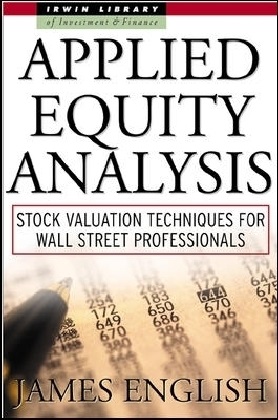Read more
Today's Most Comprehensive Practitioner's Guide to Modern Equity Analysis
Professional equity analysts must contend with a number of strong forces, each pulling in separate but equally relentless directions. Applied Equity Analysis ties these disparate elements into a seamless whole, and presents a clear, complete equity analysis picture.
Written from the working analyst's point of view, in a singularly candid style that is both thought provoking and illuminating, Applied Equity Analysis covers:
How to think, speak, and develop investment recommendations in the language of Wall Street
How competitive forces directly impact financial results and, in the process, drive stock valuation
How to use valuation methodologies designed to quantify the growth and earnings assumptions inherent in speculative stock prices
Applied Equity Analysis emphasizes techniques that work on a day-to-day basis, rather than traditional but often impractical academic approaches. By combining a solid discussion of finance and investment theory with techniques popular among today's buy- and sell-side analysts, it presents a picture of stock investment analysis that is analytically rigorous, aggressively uncompromising, and based on earnings the true driving force of Wall Street.
"The equity analyst's job is to present a position, supported by financial and non-financial evidence. Data unnecessary to the argument are, in a word, unnecessary. However, the analyst must understand all the data, relevant or not. The ultimate goal of the equity analyst is the exploitation of any difference between a stock's price and its value."
From Chapter 1
Applied Equity Analysis is about understanding all the data. Written by former JP Morgan managing director James English an adjunct professor of finance at the Columbia University School of Business, honored by The Wall Street Journal for his stock analysis skills this innovative book treats valuation as a practical tool rather than a theoretical exercise. Its integrated approach shows you how to build straight-line connections between a firm's fundamental competitive situation and its stock performance, by combining an understanding of a firm's competitive strengths and weaknesses with accurate financial statement analysis to build a more complete model of a firm's future stock market performance
Combining a solid discussion of finance and investment theory with techniques frequently used by working buy- and sell-side analysts, Applied Equity Analysis discusses:
Specific valuation techniques for identifying stocks that are undervalued relative to their peers
Quantitative techniques to link a firm's projected future financial performance to its potential future valuation based upon the current trading patterns of comparable stocks
A hybrid valuation technique to mathematically calculate a stock's inherent growth expectations
A proven strategy for formulating and successfully presenting an investment recommendation
An entire chapter on the Stern Stewart EVA TM system as an alternative and potentially useful way of decoding financial statement information
Relative and hybrid earnings-based valuation techniques that are more practical than cash-flow methods and frequently far superior
On today's Wall Street, equity analysts must focus on a firm's ability to produce returns that exceed capital costs, and then estimate the firm's future power to maintain and increase those returns. Let Applied Equity Analysis supply you with in-depth examples and explanations of Wall Street's most important equity analysis tools and give you a hands-on, real-world handbook for equity analysis in today's complex financial marketplace.
List of contents
Part I: Getting Started. Chapter 1: A Day in the Life. Chapter 2: Fundamentals of Equity Valuation. Chapter 3: Strategy and Competition I: The Firms's External Environment. Chapter 4: Strategy and Competition II: The Firm's Internal Competitive Resources. Chapter 5: Fundamentals of Stock Behavior. Part II: The Basic Tools. Chapter 6: Reading a Financial Statement: The Accuracy, Sustainability, and Predictability of Financial Information. Chapter 7: Reading a Financial Statement: The Composition of Returns. Chapter 8: Reading a Financial Statement: Early-Stage Companies and Investment Capacity. Chapter 9: Reading a Financial Statement: Later-Stage Companies and the Transition to Maturity. Chapter 10: Economic Value Added: An Alternative to Traditional Analysis Techniques. Part III: Financial Models. Chapter 11: Financial Modeling: Base Case Assumptions and Model Design. Chapter 12: Financial Modeling: The Income Statement and Balance Sheet. Chapter 13: Financial Modeling: The Statement of Cash Flows. Part IV: Equity Valuation. Chapter 14: Valuation: Foundations and Fundamentals. Chapter 15: Combat Finance: Relative Methods and Companion Variable Models. Chapter 16: Hybrid Valuation Techniques. Chapter 17: The Quirky Price/Earnings Ratio. Chapter 18: Valuation of Speculative Stocks. Chapter 19: Equity Analysis and Business Combinations. Part V: Getting It Down on Paper. Chapter 20: Financial Writing: Don't Bury the Lead.
About the author
James English (Chappaqua, NY) is managing director in JP Morgan’s venture capital unit and an adjunct professor of finance at Columbia University School of Business.
Summary
Applied Equity Analysis treats stock valuation as a practical, hands-on tool rather than a vague, theoretical exercise--and covers the entire valuation process from financial statement analysis through the final investment recommendation.

